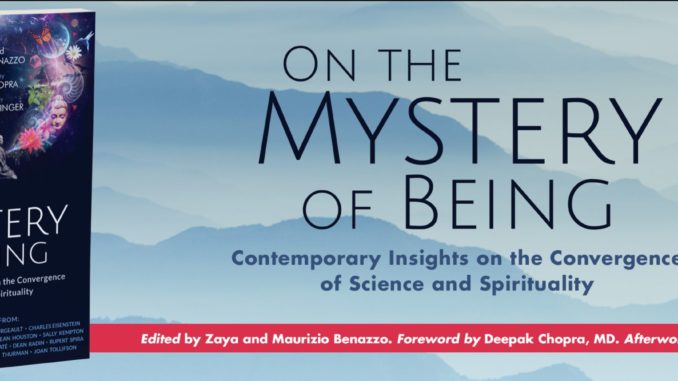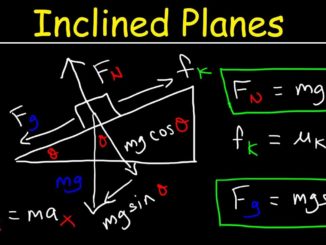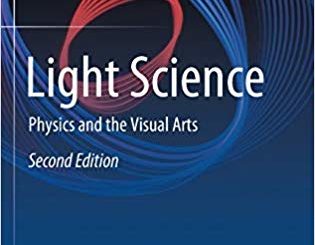
The Convergence
Science is a belief system. It is a highly successful one, but a belief system nonetheless. Yet, the direction of physics, psychology and metaphysics all seem to be converging upon one understanding of what is described variously in these disparate disciplines as a unified field, the collective consciousness (or collective unconscious), Unity, Wholeness, Ground of Being, the Absolute or ‘God.’ Just pick your term.
The question that this points to is why a belief system steeped in the rigors of the scientific method – with the incumbent necessity to have its “laws” and “theories” produce verifiable predictions that will produce ‘objective’ and repeatable results – should be pointing towards essentially the same conclusion, albeit in different terms, as the far ‘mushier’ social sciences and metaphysics do: that the all (or ‘All’) is One, and in it “we live and move and have our being.” (Acts 17:28)
Two conclusions seem apparent: First, that we just have a basic affinity, despite our egoic and inherently dualistic self-consciousness, with the numeral ‘one’ as the most basic unit of calculation (the concept of “nil” or “zero” came along much later); or, that we really are integral parts of an undivided ‘wholeness’ or universal field. So, therefore, let us move quickly to examine the latter for an explanation of why scientists, psychologists and philosophers all seem to be scratching the surface of the same thing.
The Resistance
Perhaps the most influential book of the past one hundred years discussing just what modern science ‘is’ and how the process (and progress) of modern science ‘works’ is Thomas Kuhn’s “The Structure of Scientific Revolutions.”
Kuhn’s basic thesis is that science comes to accept a ‘paradigm’ that explains and accounts for the observations that scientists have made to that point in time and the experiments they have run to verify their theories about just “what” is “what.” A paradigm is thus essentially the prevailing “belief system” within the larger “belief system” of science.
Kuhn asserts that a dominant paradigm will remain rigid until someone notices an “anomaly,” or ‘result’ which the paradigmatic theory does not and cannot explain, even hypothetically. At that point – and quite often it is the same person who first spots the anomaly – some theorist comes along with a new theory or belief system that can and does explain the ‘results’ which the prior paradigm could not.
The “ordinary scientists” in lab coats – those charged with ‘fleshing out’ the older scientific paradigm and determining its intricacies, rather than sweeping it away with a theoretical flourish – are most typically opposed to and suspicious of the new paradigm at first. Yet, in time as the new paradigm is understood and tested, and its predictions are proven to be correct experimentally, both leading and mainstream scientists will eventually come to a consensus in favor of it. The new ‘theory’ or ‘belief system’ is gradually adopted and the old theory falls by the scientific wayside as a ‘new paradigm’ is born. A good example of this process (and one used, not surprisingly, by Kuhn himself) is how Einstein’s theory of relativity superseded Newton’s “classical” theories of optics, motion and gravity.
Lord Kelvin famously mispredicted that there were only a few clouds left on the horizon of physics at the dawning of the 20th-century. Five years later, a young Swiss patent clerk named Albert Einstein would rewrite physics textbooks when, in his annus mirabulus of 1905, he published three ‘major papers (and two ‘minor’ papers) that fundamentally changed the direction of physics and laid the groundwork for both Einstein’s own relativity theory and the quantum theory.
One problem on Lord Kelvin’s horizon was that Newton’s ‘classical’ theory couldn’t explain the strange anomaly of Mercury’s orbit. Along came Einstein with a wholly new paradigm of how we might understand the physics of motion that would explain the Martian orbit anomaly and a number of other problematic difficulties. Einstein didn’t figure out the relativity theory in order to explain Mercury’s orbit, but it did.
Relativity theory did, however, predict that during a solar eclipse it could be shown that the great mass of the sun actually bends the light from stars whose positions fall within a degree of arc from the edge of the eclipsed sun. Most scientists were, as Kuhn notes, skeptics. However, English physicist, Arthur Eddington – one of the few scientists that could and did grasp the full import of relativity – thought Einstein was correct, and in 1919 he set up an expedition to photograph a full solar eclipse and thus verify Einstein’s prediction. (It was no small professional risk for an Englishman to be seen as ‘collaborating’ with a German in the month’s proceeding and after the end of ‘the Great War.’)
Eddington’s observations, nonetheless, put relativity theory to the proof and established it as the new paradigm for physics (together with Quantum theory, which Einstein also played a hand in developing); however this did not occur for a full fifteen years after Einstein published his “Special Theory of Relativity,” and three years after he published the “General Theory of Relativity.”
The Emergence
The problem is that ‘science’ will not accept any evidence for its theories that is not “objective” and “empirical” (i.e., backed by data expressible in mathematical terms). Since virtually all spiritual and/or religious experience is inherently “subjective” and “non-empirical” in the current view of what science is about, this conveniently precludes scientists, psychologists and philosophers from speaking a common language about at least the surface of the unitive field, consciousness or Absolute which all disciplines are scratching. And, until this overarching ‘paradigm’ is successfully challenged, by definition all the observations of thousands of years of Eastern psychological, physical and metaphysical experience cannot challenge science’s paradigms.
This is true even where, as in quantum mechanics (which cannot explain why an “observation” is needed to give ‘reality’ to and ‘determine’ a quantum event, or how seemingly ‘separate’ particles remain ‘entangled’ with each other even at monumental distances), theoretical research calls out for the explanations that Eastern “inner scientists” discovered millennia ago. Thus, (as Einstein noted) “Science without religion [remains] blind, while religion without science [remains] lame.”
It does seem, however, that the “Chinese Wall between the objective and subjective, between the empirical and intuitive, between the East and West, is slowly giving way and that the campaign to at last get the Western mind sciences to look at the invaluable findings of Eastern traditions is succeeding. The cooperative work of Western scientists with meditation practitioners from Eastern wisdom traditions, using evermore increasingly sophisticated instruments (both the highly trained Eastern ‘brain,’ and the powerful Western technical ‘brawn’), promises to do for the study of consciousness and the understanding of our ‘inner’ landscape what Galileo’s telescope did for the study of physics and our understanding of our ‘outer reality,’ despite the time it may take for a truly East-West, physical and metaphysical ‘paradigm’ to emerge.
Proudly WWW.PONIREVO.COM
Source by Bruce Godden



